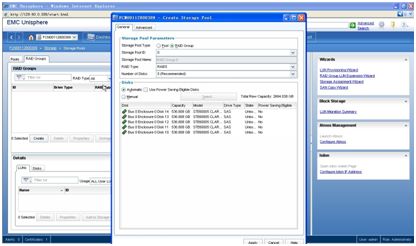vmware虚拟机怎么扩容

方法1,适用于10.0版本以上。
在菜单中选择此虚拟机的设置,接着在要扩展的硬盘上选择[实用工具]中的扩展,在接下来的对话框中选好扩展后的容量,点[扩展]即可。
方法2,如果VMware版本较低,则不能在图形界面进行扩展操作,但是别急,VMware一直提供了命令行工具,而且功能更强大。
在命令行界面进入VMware的程序目录,找到vmware-vdiskmanager.exe,先不带参数运行一下,看看使用方法的帮助信息。
我们看到使用-x参数即为扩展硬盘容量,在后面还有EX示例。
现在,我们要把F:\vm_Windows XP目录下的vm_Windows XP.vmdk硬盘扩展到80GB,只要执行:
"C:\Program Files (x86)\VMware\VMware Workstation\vmware-vdiskmanager.exe" -x 80GB "F:\vm_Windows XP\vm_Windows XP.vmdk"
注意我为了便于理解,把命令文件和磁盘文件的路径都写全了。加双引号是因为路径长文件名中有空格。
虚拟机里面的硬盘怎么扩容
打开虚拟机,但不要启动系统。,选择要扩容的虚拟机——设备——硬盘(这里小编已经完成了扩容60G,一般是10G,按方法做就可以)
硬盘打开后,磁盘文件,点击右下方的实用 工具
在实用工具中扩展磁盘容量,按照你的需求选择20G,这里以60G为例
这时候打开虚拟机,发现硬盘的大小还是10G,并没有发生改变,别急
下一步,右击左侧我的电脑,找到管理——存储——磁盘管理,可以看到有一部分内存尚未投入使用
6
在分区上点击'C盘',右键选择“扩展卷”,按扩展卷向导。
虚拟机(已安装好操作系统)的硬盘如何扩大?
今天上了存储,之前有些项目LINUX虚拟机需要扩容,所以做了下测试,希望对大家有用。
1、首先需要做在线硬盘扩容的话,需要保证虚拟机没有快照。
第一种方法:在原有的硬盘上直接改变磁盘置备的大小
改之前:25G
[root@localhost~]#lsblk
NAMEMAJ:MINRMSIZEROTYPEMOUNTPOINT
sda8:0025G0disk
├─sda18:101G0part/boot
├─sda28:2015G0part
│├─rhel-root253:0066.4G0lvm/
│└─rhel-swap253:101.6G0lvm[SWAP]
└─sda38:309G0part
└─rhel-root253:0066.4G0lvm/
改之后:40G
[root@localhost~]#lsblk
NAMEMAJ:MINRMSIZEROTYPEMOUNTPOINT
sda8:0025G0disk
├─sda18:101G0part/boot
├─sda28:2015G0part
│├─rhel-root253:0066.4G0lvm/
│└─rhel-swap253:101.6G0lvm[SWAP]
└─sda38:309G0part
└─rhel-root253:0066.4G0lvm/
通过partprobe命令也无法识别出来
重启之后,识别出来40G空间
[root@localhost~]#lsblk
NAMEMAJ:MINRMSIZEROTYPEMOUNTPOINT
sda8:0040G0disk
├─sda18:101G0part/boot
├─sda28:2015G0part
│├─rhel-root253:0066.4G0lvm/
│└─rhel-swap253:101.6G0lvm[SWAP]
└─sda38:309G0part
└─rhel-root253:0066.4G0lvm/
sda1+sda2+sda3=25G,所以sda还有15G可以用
[root@localhost~]#fdisk/dev/sda
欢迎使用fdisk(util-linux2.23.2)。
更改将停留在内存中,直到您决定将更改写入磁盘。
使用写入命令前请三思。
命令(输入m获取帮助):n
Partitiontype:
pprimary(3primary,0extended,1free)
eextended
Select(defaulte):p
已选择分区4
起始扇区(52428800-83886079,默认为52428800):
将使用默认值52428800
Last扇区,+扇区or+size{K,M,G}(52428800-83886079,默认为83886079):
将使用默认值83886079
分区4已设置为Linux类型,大小设为15GiB
命令(输入m获取帮助):t
分区号(1-4,默认4):8e
分区号(1-4,默认4):
Hex代码(输入L列出所有代码):8e
已将分区“Linux”的类型更改为“LinuxLVM”
命令(输入m获取帮助):w
Thepartitiontablehasbeenaltered!
Callingioctl()tore-readpartitiontable.
WARNING:Re-readingthepartitiontablefailedwitherror16:设备或资源忙.
Thekernelstillusestheoldtable.Thenewtablewillbeusedat
thenextrebootorafteryourunpartprobe(8)orkpartx(8)
正在同步磁盘。
[root@localhost~]#
[root@localhost~]#partprobe
[root@localhost~]#lsblk
NAMEMAJ:MINRMSIZEROTYPEMOUNTPOINT
sda8:0040G0disk
├─sda18:101G0part/boot
├─sda28:2015G0part
│├─rhel-root253:0066.4G0lvm/
│└─rhel-swap253:101.6G0lvm[SWAP]
├─sda38:309G0part
│└─rhel-root253:0066.4G0lvm/
└─sda48:4015G0part
将sda4加进去
[root@localhost~]#vgs
VG#PV#LV#SNAttrVSizeVFree
rhel520wz--n-73.98g5.98g
[root@localhost~]#lvm
lvm>pvcreate/dev/sda4
Physicalvolume"/dev/sda4"successfullycreated.
lvm>vgextendrhel/dev/sda4
Volumegroup"rhel"successfullyextended
lvm>lvdisplay
---Logicalvolume---
LVPath/dev/rhel/swap
LVNameswap
VGNamerhel
LVUUIDIIuZXp-olio-8mnv-zOYn-hm9a-CjWb-89C75z
LVWriteAccessread/write
LVCreationhost,timelocalhost.localdomain,2019-04-1716:33:20+0800
LVStatusavailable
#open2
LVSize1.60GiB
CurrentLE410
Segments1
Allocationinherit
Readaheadsectorsauto
-currentlysetto8192
Blockdevice253:1
---Logicalvolume---
LVPath/dev/rhel/root
LVNameroot
VGNamerhel
LVUUID8PMjP0-HifX-qHKj-CqN2-dnnd-Ln0N-9Th9bK
LVWriteAccessread/write
LVCreationhost,timelocalhost.localdomain,2019-04-1716:33:21+0800
LVStatusavailable
#open1
LVSize66.39GiB
CurrentLE16997
Segments5
Allocationinherit
Readaheadsectorsauto
-currentlysetto8192
Blockdevice253:0
lvm>lvextend-L+15G/dev/rhel/root
Sizeoflogicalvolumerhel/rootchangedfrom66.39GiB(16997extents)to81.39GiB(20837extents).
Logicalvolumerhel/rootsuccessfullyresized.
lvm>EXIT
Nosuchcommand'EXIT'.Try'help'.
lvm>exit
Exiting.
[root@localhost~]#xfs_growfs/dev/rhel/root
meta-data=/dev/mapper/rhel-rootisize=512agcount=18,agsize=877824blks
=sectsz=512attr=2,projid32bit=1
=crc=1finobt=0spinodes=0
data=bsize=4096blocks=15045632,imaxpct=25
=sunit=0swidth=0blks
naming=version2bsize=4096ascii-ci=0ftype=1
log=internalbsize=4096blocks=2560,version=2
=sectsz=512sunit=0blks,lazy-count=1
realtime=noneextsz=4096blocks=0,rtextents=0
datablockschangedfrom15045632to21337088
这里是redhat7,文件系统是xfs,所以用命令xfs_growfs如果是redhat6,ext4的文件系统,则是resize2fs命令
扩容后最终
[root@localhost~]#lsblk
NAMEMAJ:MINRMSIZEROTYPEMOUNTPOINT
sda8:0040G0disk
├─sda18:101G0part/boot
├─sda28:2015G0part
│├─rhel-root253:0081.4G0lvm/
│└─rhel-swap253:101.6G0lvm[SWAP]
├─sda38:309G0part
│└─rhel-root253:0081.4G0lvm/
└─sda48:4015G0part
└─rhel-root253:0081.4G0lvm/
缺点,需要重启一次
第二种方法:直接添加硬盘,而不是在原有的上面只接更改大小
添加的硬盘直接可以识别出来,直接按照第一种方法的重启之后的步骤一步一步就可以了。
优点:不需要重启
虚拟机怎么扩展磁盘容量
首先你要POWER
OFF虚拟机,然后添加多一个磁盘,再POWER
ON,我的电脑-管理-磁盘管理,就会看到多了一个未初始化的磁盘。将它初始化,按平常那样分区就可以至少分多出一个分区出来。
vm linux 虚拟机空间怎么扩容
一、Vm虚拟机下Linux扩展原有磁盘空间,详细步骤如下:
需注意以下几点: linux只能扩展磁盘容量而不能减小, 所填写的容量为总容量,即包含已分区的磁盘, 扩展容量时不能有快照哟,大家可以先把快照删除掉。
2.启动Linux,查看系统分区,并创建分区sda3,命令如下:红色字体命令,#后为注释:
[root@localhost~]#fdisk -l
Disk /dev/sda:32.2GB,32212254720 bytes
255heads,63sectors/track,3916cylinders
Units=cylindersof16065*512=8225280 bytes
DeviceBoot Start End Blocks Id System
/dev/sda1 * 1 13 104391 83 Linux
/dev/sda2 14 1566 12474472+ 8e Linux LVM
#我的电脑有2个分区-sda1 sda2
[root@localhost~]#fdisk /dev/sda
Thenumberofcylindersforthisdiskissetto3916.
Thereisnothingwrongwiththat,butthisislargerthan1024,
andcouldincertainsetupscauseproblemswith:
1)softwarethatrunsatboottime(e.g.,oldversionsofLILO)
2)bootingandpartitioningsoftwarefromotherOSs
(e.g.,DOSFDISK,OS/2FDISK)
Command(mforhelp):m
Commandaction
a toggle a bootable flag
b edit bsd disk label
c toggle the dos compatibility flag
d delete a partition
l list known partition types
m print this menu
n add a new partition
o create a new empty DOS partition table
p print the partition table
q quit without saving changes
